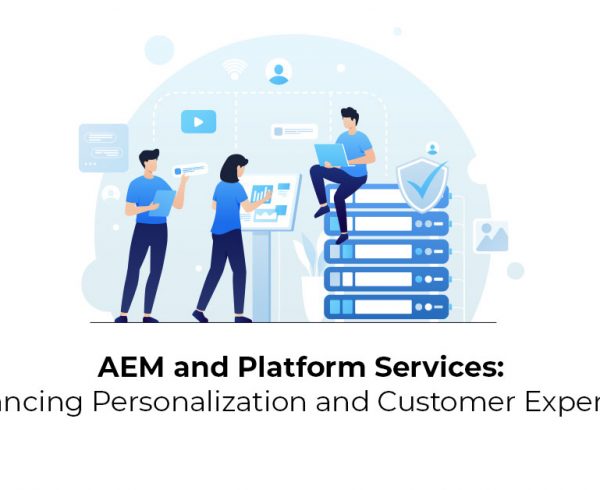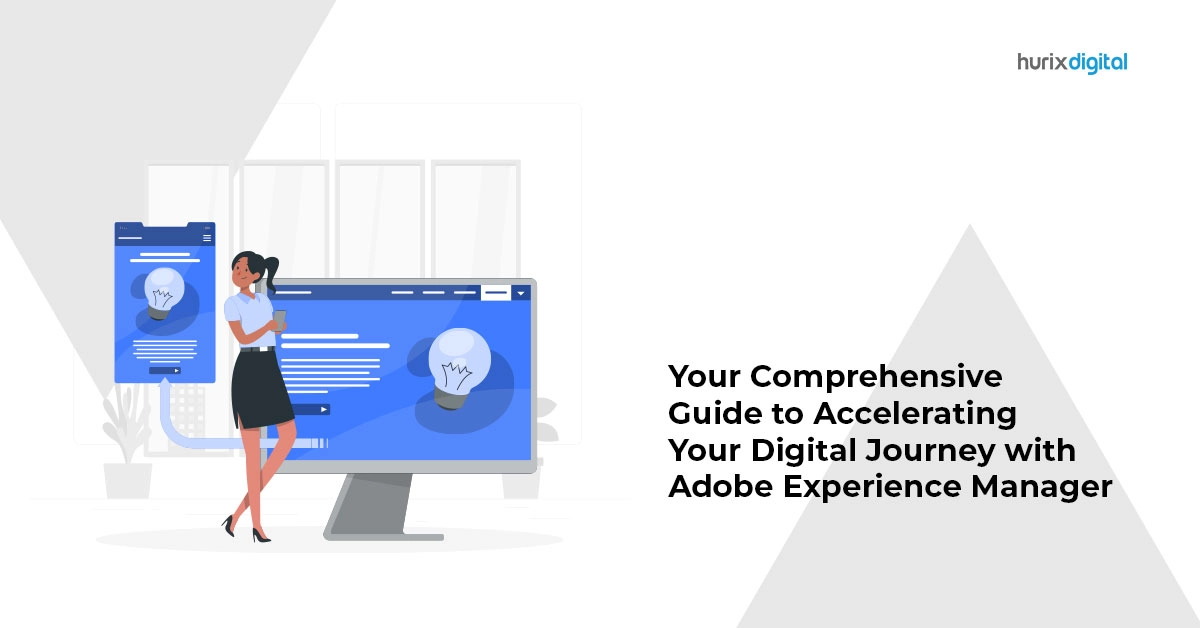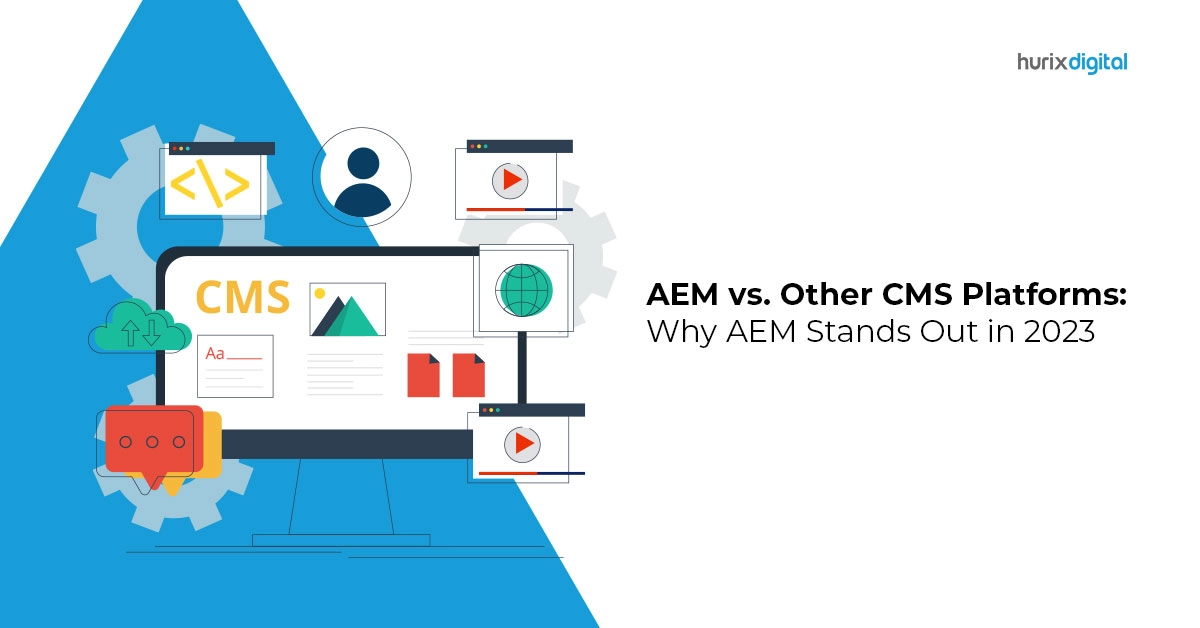Summary
This blog provides you with an overview of the key features of Adobe Enterprise Manager and the advantages it brings to businesses with heavy online operations.
As the penetration of digitality increases, businesses grapple with building an online presence through websites and other channels to woo more customers. Here, robust content management systems solidify their utility and efficacy in helping these businesses organize their websites, mobile apps, forms, and more.
On the same tangent, AEM implementation is part of a business strategy that deals hands-on with developing and implementing Adobe Experience Manager – a content management solution – within a business’s ecosystem.
- Through this blog, you will gain an overview of the features of Adobe Enterprise Manager and the advantages it brings to businesses with heavy online operations.
Table of Contents:
- What is Adobe Experience Manager?
- What are the Key Features of Adobe Managed Services?
- What are the Major Advantages of Adobe Experience Manager Platform?
- Wrapping Up
What is Adobe Experience Manager?
Like WordPress or Joomla, Adobe Experience Manager is a content management solution. However, it is much more powerful and feature-rich as compared to other similar platforms. In fact, according to W3Techs, the AEM platform is utilized by websites that experience a heavy influx of traffic.
A few popular brands that leverage AEM-managed services are Microsoft, Samsung, Cisco, LinkedIn, etc.
It is evident from features like summarization, editing, web design, styling, templates, etc., that the Adobe Experience Manager Platform is a tough challenger for other CMS solutions in the market.
Let’s look at some of the key features of AEM services.
Also Read: Creating Dynamic and Personalized Web Experiences with AEM
What are the Key Features of Adobe Managed Services?
Adobe Enterprise Manager is a full-scope solution for all your content management needs. It provides several specialized features under four major categories:
- Create
- Manage
- Deliver
- Optimize
1. Create
The Create module of the AEM platform is equipped with tools that facilitate the quick and easy creation of content using drag-and-drop design environments. You get access to extremely handy tools like:
- Automatic text summarization
- In-context editing
- Responsive web designs
- Styling and design standardizations across pages
- Single-page application management
- Backward compatibility and crumbs, forms, navigation, search, etc.
- Channel-agnostic components to facilitate module reuse
- Templates
2. Manage
AEM platform brings all your content together to aid the quick mobilization of assets, managing a variety of project workflows, version controls, translations, etc. You get a plethora of features that aid the smooth functioning of the content systems at your enterprise:
- Cloud manager
- Multisite management
- Integration of translations
- Version control
- Page property management, like titles, tags, thumbnails, language, etc., using live copies.
- Shared environments for project workflows.
3. Deliver
Perhaps the most powerful aspect of the AEM platform is its application of machine learning and analytics to understand content preferences and usage. It helps you deliver content on demand to your audience across geographies.
Tools include:
- Integration of commerce modules
- Content as a service
- Digital display and signage management
- Headless content management system
- GraphQL API for headless CMS
This aspect of the AEM platform helps you deliver content anywhere.
4. Optimize
The optimization toolset in Adobe AEM is oriented towards establishing relevance and scalability in the organization’s content needs. It helps professionals with reports, analytics, SEO, etc., without needing to code anything.
Some of the most interesting tools under this feature are:
- Content insights about page views, unique visitors, and more.
- Rules-based targeting.
- Insights on targeting, including average order value, revenue per visitor, and more.
- Real-time customer profile.
What are the Major Advantages of Adobe Experience Manager Platform?
AEM implementation has the potential to deliver five key benefits to your business in the short and long terms:
1. Complete Web Content Management
Businesses today operate across multiple digital channels, geographies, languages, formats, and more. It becomes challenging to organize and manage such a high content volume – and this is where the AEM platform shines.
With its headless architecture and flexible tools for developers, it is possible to efficiently manage all the content and data in Adobe Experience Manager. By bringing the entirety of the content in one place and plugging in the tools necessary to manage this data, the AEM platform makes it easy to create a sound digital foundation for your content.
2. Cross-Channel Capabilities
The digital journey of customers is not linear any longer. It branches out across a variety of channels and touchpoints, creating a complex network of data points for a business to measure.
Adobe Experience Manager provides tools to create a seamless, cross-channel journey across various touchpoints, like single-page applications, IoT devices, on-premises screens, etc.
Your business can truly deliver a stellar customer experience that isn’t broken and is context-aware at all times, helping you elevate personalization to the next level.
3. Personalization Capabilities
The importance of relevant content can’t be understated for the modern customer. Serving the most relevant and highly personalized offerings at every customer touchpoint has become essential.
Adobe Enterprise Manager provides a full set of machine learning capabilities augmented with customer analytics to provide your business with a clear picture of the content preferences of each customer profile or cohort.
Targeted campaigns can be mobilized depending on data-backed analytics and automated workflow builders. You can adjust content flexibility, measure performance, personalize it for omnichannel use, and more.
4. AI-Backed Scalability
One of the most valuable benefits of AEM implementation is access to AI and ML-powered analytics. These powerful tools help you understand customers’ content preferences to design hyper-personalized experiences at scale.
Your business can create meaningful customer interactions for thousands of customers in parallel and at once. This capability to design a customer journey based on AI-analyzed data at a large scale reduces the number of manhours invested in interpreting raw data.
4. Easy Development and Collaboration
Before a new experience is updated across the customer journeys existing online, it needs to be thoroughly tested for efficacy. With Adobe Experience Manager’s flexible and adaptable environments that facilitate rapid development and testing amongst a team, it is possible for brands to quickly design, create, test, and launch new customer experiences across multiple channels and within record time.
Check out this Exclusive Press Release: Hurix Digital Joins Adobe Bronze Solution Partnership Program to Enhance AEM Consulting Services
Wrapping up
Without a good content management solution, it is nearly impossible for businesses to manage their content online. AEM is an extremely capable platform that not only allows you to create but also to edit and improve your content management systems in a way that is efficient and swift.
It has tremendous benefits for businesses in addition to saving time and energy through automation.
With Hurix Digital’s digital engineering services, AEM implementation has never been easier and more efficient.
To understand how Hurix Digital can help with AEM implementation, visit our website.











